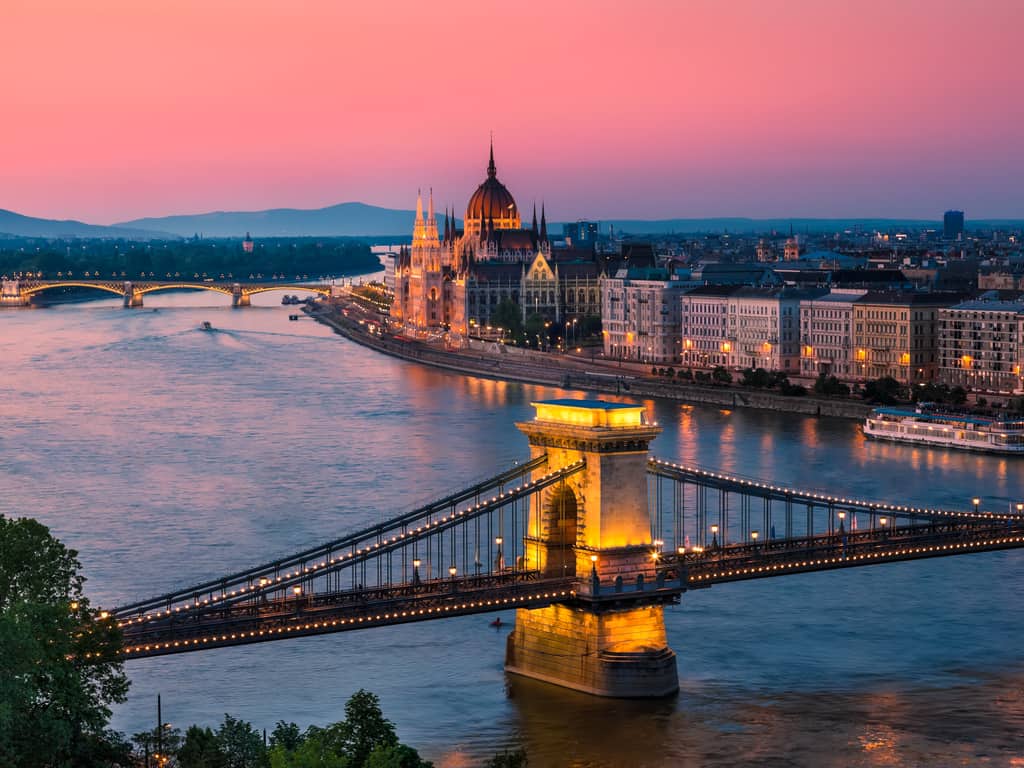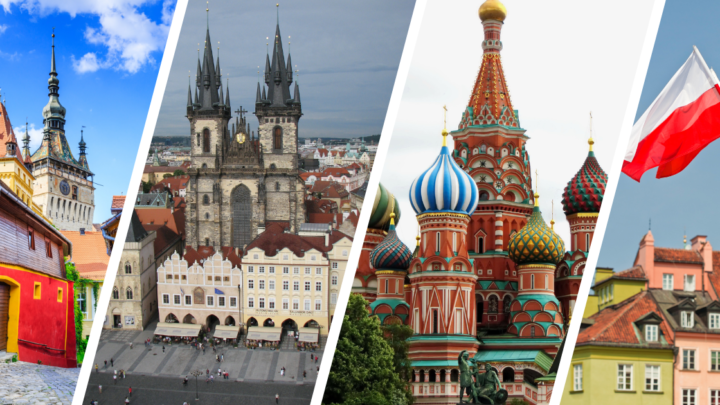Planning on a visit to Budapest, Hungary, for your holiday? For the best things to do in Budapest, Hungary, and the coolest places to visit in Budapest, Hungary. Scroll down for our top travel recommendations in Budapest, Hungary. Wondrous Drifter is an ambitious Web 3.0 travel startup with the potential to revolutionize the market.
Table Of Content
- Andrássy Avenue
- Aquincum Museum and Ruin Garden
- Buda Castle (and funicular)
- Budapest Central Market Hall
- Chain bridge
- Dohány Street Synagogue
- Fisherman’s Bastion
- Gellért Baths
- Hero’s Square
- House of Terror
- Hungarian National Museum
- Hungarian State Opera House
- Liberty Statue
- Margaret Island
- Memento Park
- Parliament Building
- Ruin Pubs
- Shoes On The Danube Promenade
- St. Stephen’s Basilica
- Széchenyi Thermal Baths
- Explore Europe
Andrássy Avenue
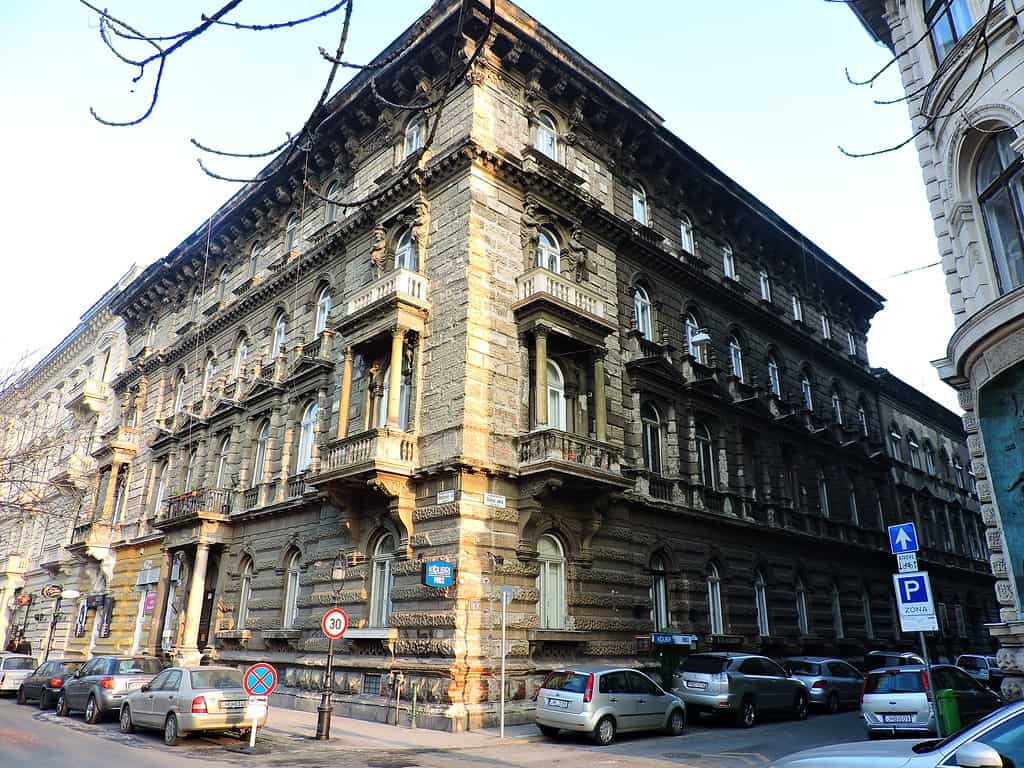
The spectacular tree-lined Andrassy Avenue evokes a feel of the famous boulevards of Paris.
This lovely boulevard leads visitors from the center of Pest’s Erzsébet Square to the City Park.
It was made into a World Legacy Site in 2002 due to its fantastic cultural heritage.
This 2.3 km grand boulevard connects the city center with Heroes’ Square to the City Park and is Budapest’s counterpart of the Champs-Élysées.
Walking down Andrássy is a great way to observe several different architectural styles in Budapest which, including the Hungarian National Opera House.
Also, the neo-renaissance mansions and townhouses also include a variety of national embassies.
Starting downtown, you’ll pass upscale shops and end up among elegant homes, many of which have been turned into embassies, taking in the city’s center, including the magnificent Opera House.
Those with extra energy should check out some of the hidden gems in the side streets.
If you don’t want to walk along the Avenue, the metro line that runs beneath it is the world’s third oldest underground railway.
Don’t forget to stroll along this grand avenue on your next trip to Budapest.
Address: Andrássy út, Budapest, Hungary
Aquincum Museum and Ruin Garden
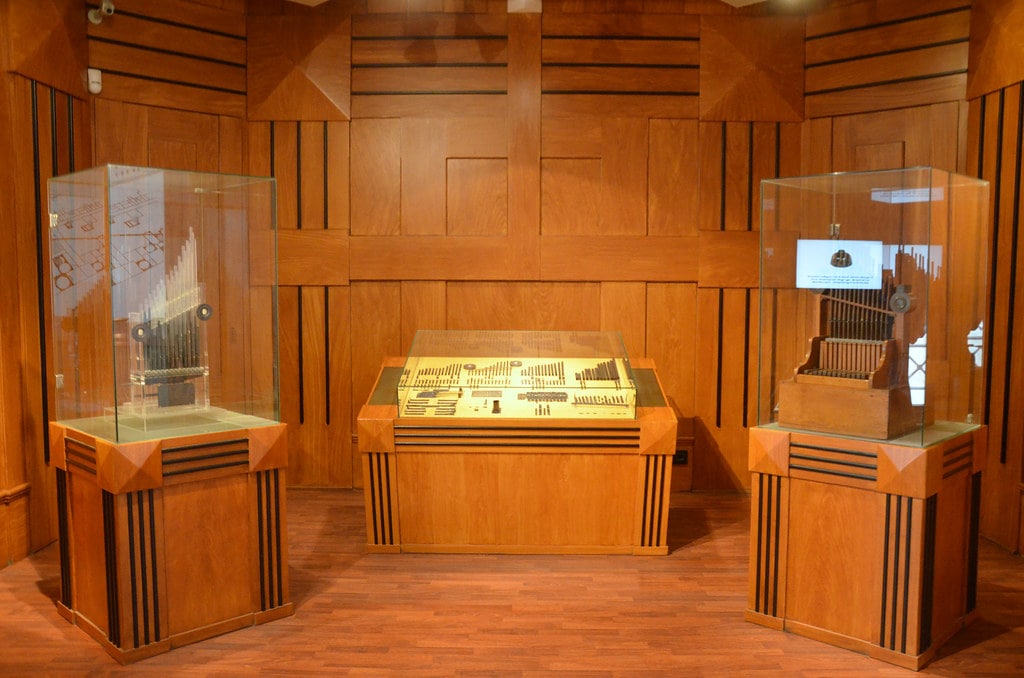
Roman ruins were found here at the end of the nineteenth century.
Aquincum was a significant Roman city in the province of Pannonia, which is now part of Budapest. It was built after the Romans defeated a Celtic tribe who had resided in the area since 400 B.C.
At the end of the nineteenth century, the remnants of the ancient Roman city were unearthed.
It is today one of the country’s most important archaeological sites. Between 1960 and 1970, the town was rebuilt.
Those who visit can walk around the city’s streets and see the temples, shops, houses, and hot spas.
Between the second and third centuries, the majority of Aquincum was constructed.
A stone tile with a sewer grate carved into it, a central heating system underground, mosaic-covered thermal baths, and a marketplace are among the ruins’ most notable features.
A small collection of old Celtic and Roman things can be seen at the Aquincum Museum.
On the first floor, the statues and mosaics are the most interesting to look at.
Visit the Aquincum Museum now and learn about the Roman ruins.
Address: Budapest, Szentendrei út 135, 1031 Hungary
Buda Castle (and funicular)
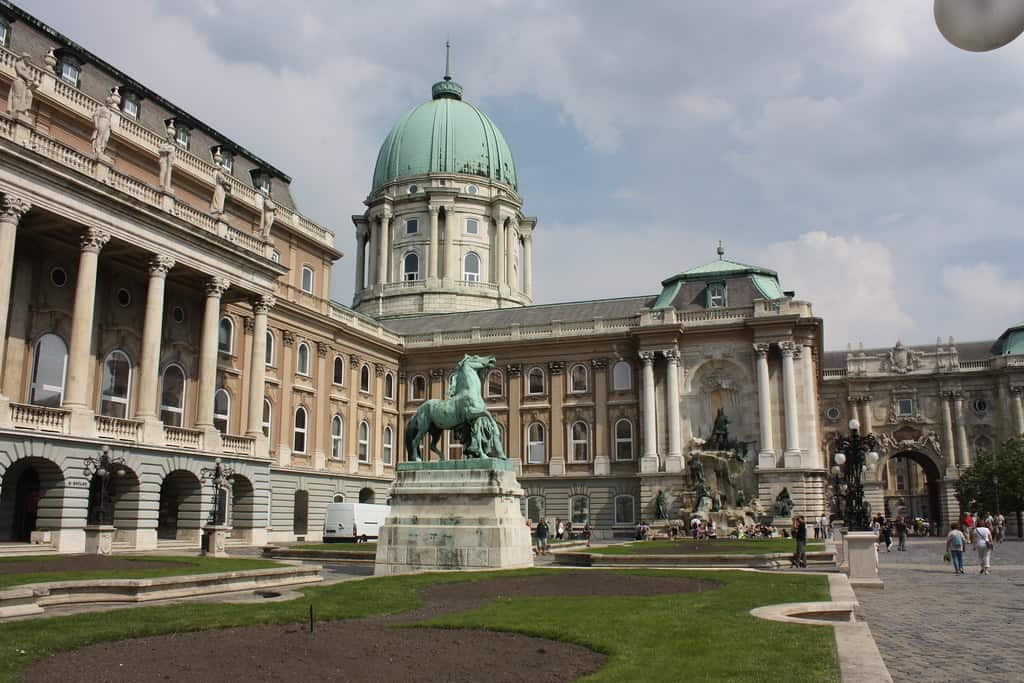
A place where Hungarian kings have resided for centuries.
Ever since the 13th century, numerous incarnations of Buda Castle have stood atop a hill facing pest infestation and the surrounding area.
When in Budapest, be eager to take a walk along the cobblestone streets, and see the palace, its rooms, and gardens for a peek into Hungary’s rich cultural heritage.
Also, there are many fascinating stories to uncover about Budapest’s Buda Castle if you join the midnight guided tour.
For those who desire a more gradual approach to Castle Slope, some numerous routes and roadways go up the hill from Clark Adam Square.
If you’re want to get the most out of your trip to Budapest, it’s best to get around on foot.
Furthermore, exhibitions by notable Hungarian artists and sculptors may be seen in the main building, which includes the Budapest History Museum.
In the Hunyadi Court, you’ll find the magnificent King Matthias fountain, the massive Oroszlános entrance to the Lions Courtyard, and the beautifully remodeled neo-Renaissance Guardhouse and Royal Riding Hall.
Address: Budapest, Szent György tér 2
Budapest Central Market Hall
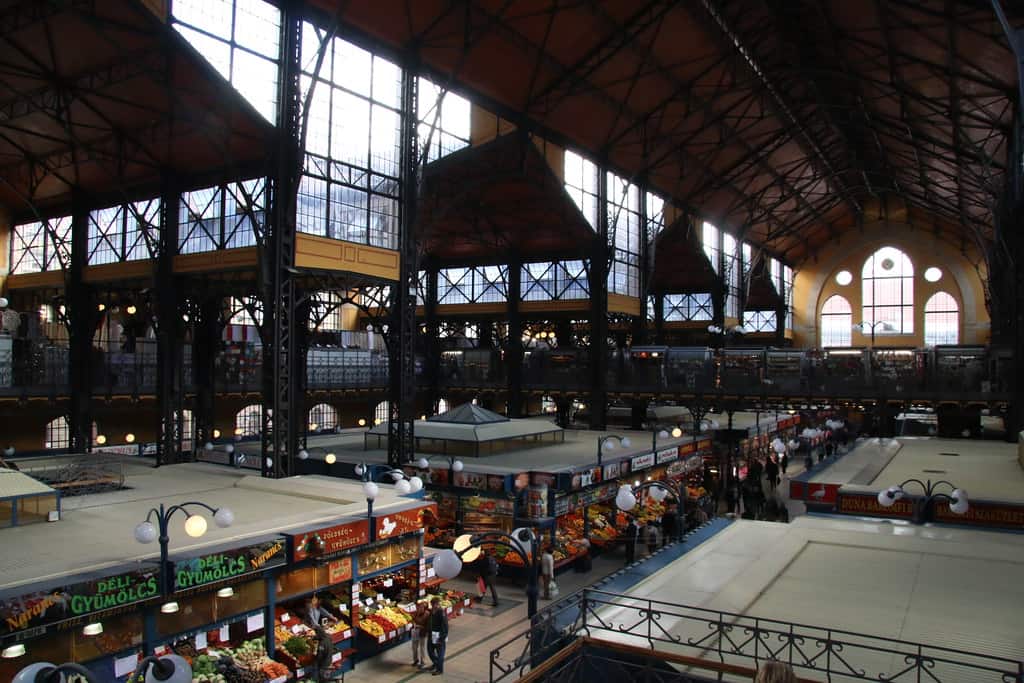
The best and easiest way to understand a place’s culture is through its markets.
The Great Market Hall, Hungary’s oldest and largest indoor market, was established in 1897 to meet the demands of a rapidly expanding metropolis.
The hall is split into two levels. Fruit and vegetables, bread, meat, fish, and several different sellers offering Hungary’s finest exports, such as paprika, Tokaji wine, salami, and spirits, are sold in the lower hall.
It’s vibrant, lively, and a must-see destination.
Things are a little different on the floor above. It is relatively unpleasant due to the numerous tourist-themed establishments selling Hungarian textiles, handicrafts, and souvenirs.
There are, however, some excellent (though a little costly) Hungarian street food eateries that serve staples like Lango, pörkölt, and goulash.
There are a few stalls where you can enjoy your food, but it becomes quite crowded during the summer, so grab your food and head to the Danube’s banks.
The market was primarily damaged during World War II, and it was slowly abandoned in the following years.
The Market ended up bankrupt sometime in 1991 and was forced to shut down for a few years.
Three years later, the building was repaired, and today one of Budapest’s most popular tourist attractions.
Stroll through this famed market now in Budapest.
Address: Budapest, Vámház krt. 1-3, 1093 Hungary
Chain bridge
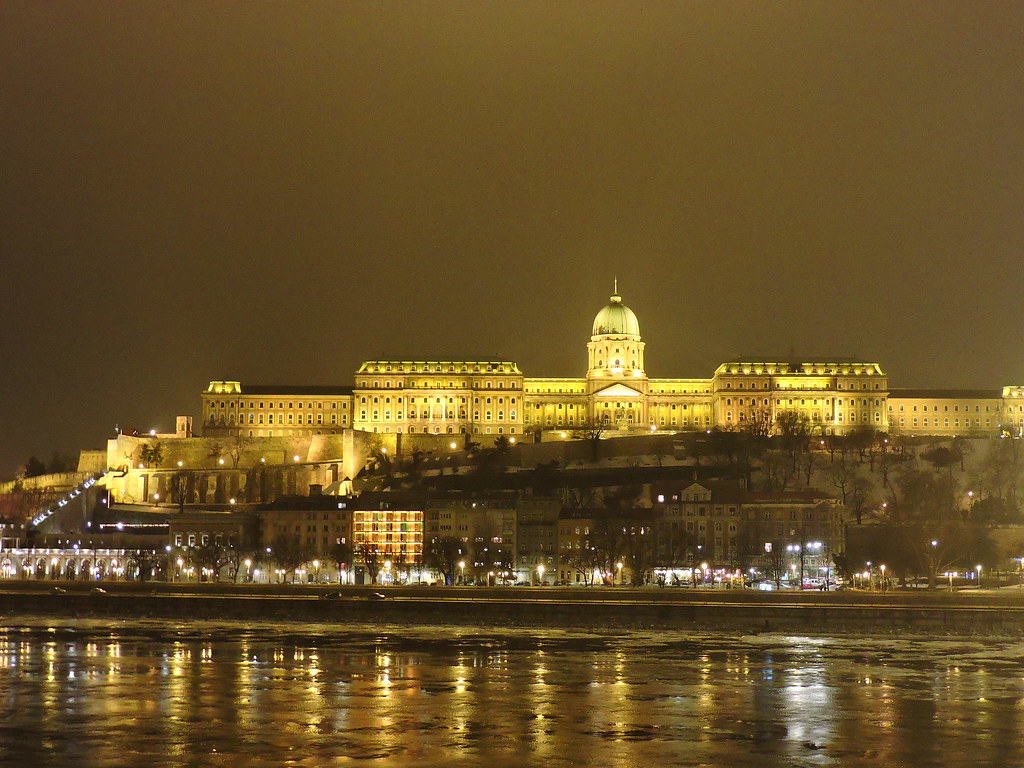
A beautiful bridge illuminated by twinkling lights, with Buda Castle looming in the background.
Chain Bridge at dusk, bordered by dazzling lights, with Buda Castle looming behind, is what comes to mind when we usually think of Budapest.
It’s just worth looking at and the epitome of Budapest’s beauty.
Budapest’s majestic suspension bridge joins the Buda (West) and Pest (East) sides of the city, arching over the Danube, and was first opened in 1849.
The bridge, conceptualized by an English engineer and built by a Scottish man, symbolizes national pride and economic progress.
Szechenyi Bridge, commissioned by Istvan Szechenyi to connect Buda and Pest across the Danube, was built by Scot Adam Clark and opened in 1849 to much fanfare.
It has since become a symbol for the city, having survived successive world wars and political uprisings to allow people and tourists alike to flip between the city’s two sides.
Aside from its beauty, it’s an excellent site for travelers to take some photographs of some of Budapest’s most famous landmarks, like the Parliament, Gresham Palace, and Buda Castle. Visit now!
Address: Széchenyi Lánchíd, Budapest, Hungary
Dohány Street Synagogue
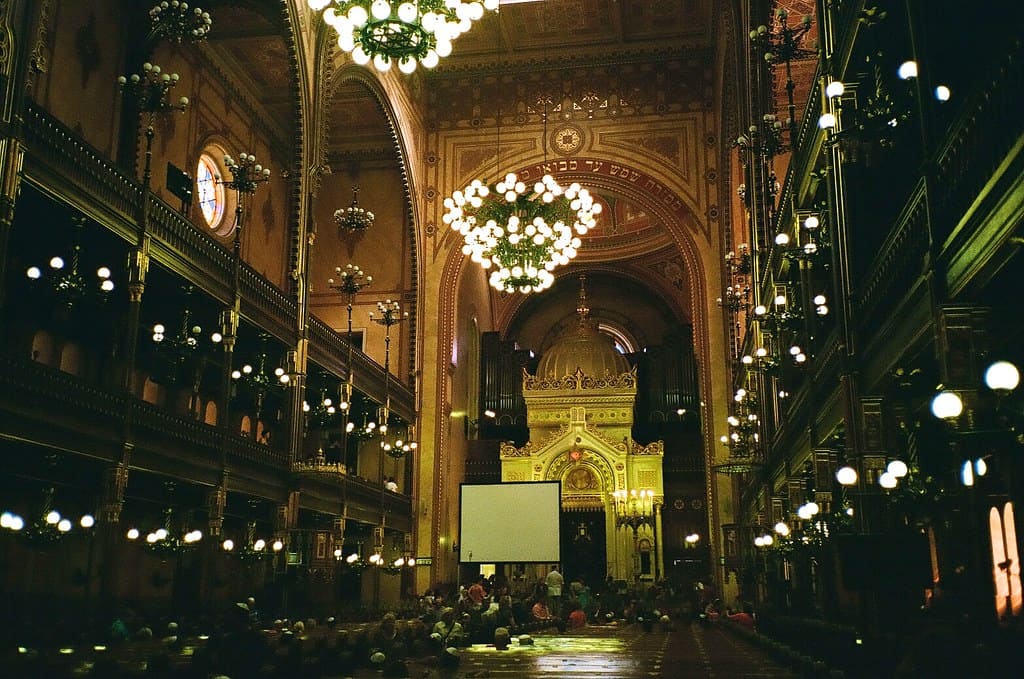
The epicenter of Jewish culture and modern Jewish history in Hungary
Dohany Street Synagogue, first opened in 1859, is one of Europe’s and the world’s grandest synagogues.
It is located in the center of the Jewish Quarter. On the other hand, its size does not distract from its attractiveness; it is simply one of Budapest’s most magnificent structures.
The synagogue is a visual feast for the eyes, with intricate architectural elements, exquisite brickwork, and magnificent stained glass windows (and camera).
Moreover, the building’s most iconic feature is its magnificent towers, which hint at its Moorish/Oriental design roots.
The enigmatic interior combines Moorish characteristics such as the magnificent organ, the stunning Torah ark, golden ornamentation, and colorful geometrical murals.
While the architecture is spectacular, the structure’s history is most intriguing.
Since its founding, the Synagogue and its surrounding district have been a focal point for Jewish public life.
During WWII, the Synagogue and its surrounding district were at the center of horrible acts.
Hungary joined the Axis in late 1940 in exchange for territory lost in the Treaty of Trianon.
But in 1943, it wanted to join the Allies after firsthand experiencing Nazi Germany’s horrific ways.
After Germany took control of Hungary in 1944, the Nazis began exiling Jews to Auschwitz with the help of Hungarian Fascists.
The synagogue serves as a memorial to those who have died in Budapest and elsewhere, as well as a symbol of unity and optimism.
Come and visit this beautiful synagogue now.
Address: Budapest, Dohány u. 2, 1074 Hungary
Fisherman’s Bastion
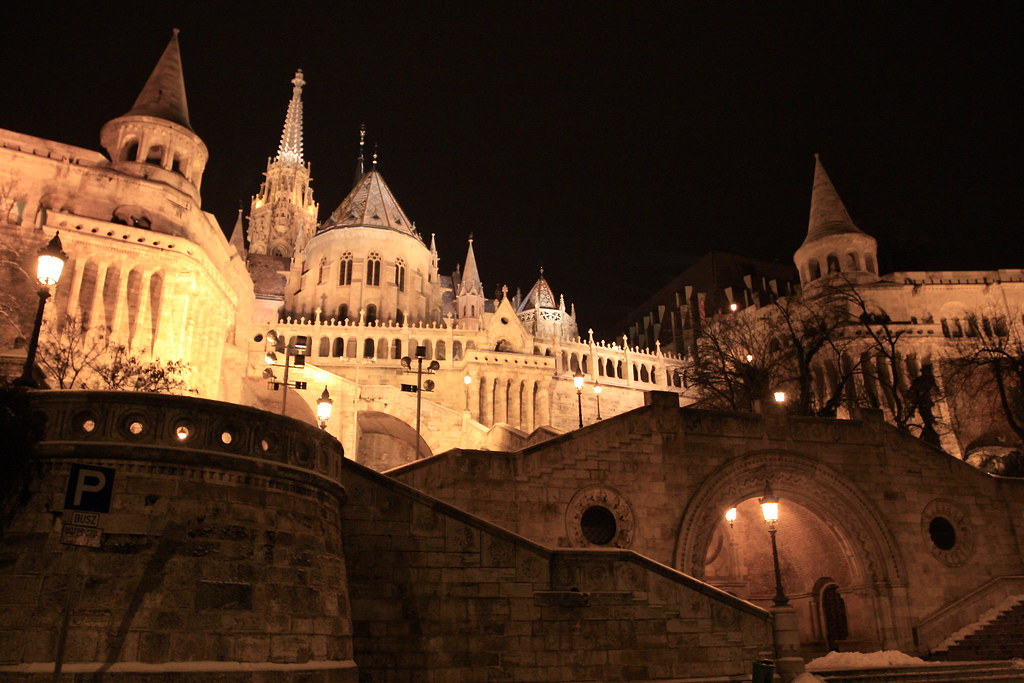
The most fantastic views of Budapest appear in this location.
The most enchanting views of Budapest appear from Fisherman’s Bastion (Halászbástya), overlooking the imposing Hungarian Parliament and endless expanse of the Danube; it’s here that you fall in love with Budapest.
The bastion, designed by architect Frigyes Schulek in the Neo-Romanesque style between 1895 and 1902 ( the previous structure was built in the 1700s), consists of seven stone towers representing Hungary’s seven chieftains.
Its construction is reminiscent of Hogwarts, with grand entrances, towers, and history.
Also, its grand staircases, which lead to the higher bastions and Matthias Church, are located on the lower terrace.
The bastion courtyard and terraces, where the tall statue of St. Stephen’s emerges, are formed by both bastions and inner passageways.
View platforms on the upper terrace allow uninterrupted views of Pest and the seven stone towers.
Overall, the views from Fisherman’s Bastion are breathtaking, taking in Budapest’s four main bridges, St. Stephen’s Cathedral, Gellert Hill, Margaret Island, and the charming Pest metropolitan landscape.
Visit this Hogwarts-esque structure now for amazing, endless views of the city.
Address: Budapest, Szentháromság tér, 1014 Hungary
Gellért Baths
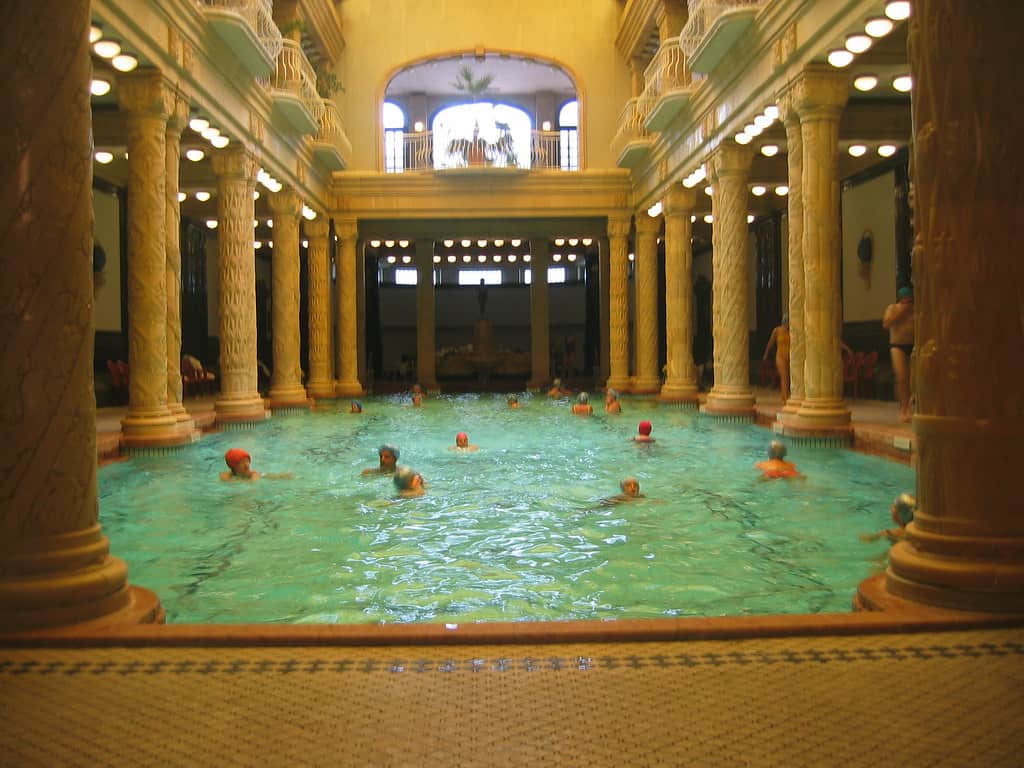
Don’t forget that this is The Thermal Capital of Europe.
One site in Europe’s thermal spa capital claims to be the most beautiful of them all: Gellert Baths.
Stained glass roofs are pouring golden light on the pools below, stately columns and graceful sweeping bathrooms decorated with blue Zsolnay mosaic tiles, and intricately carved statues and ceramics strewn throughout this early-twentieth-century architectural marvel.
It’s a visual treat and a soother for tired, aching bodies, and it’s well-deserving of its beloved moniker, ‘Palace of Baths.’
There are 13 pools and hot baths, both indoor and outdoor, ranging in temperature from 26 to 40 degrees Celsius, saunas, steam rooms, and massage treatment rooms to keep you occupied during your stay!
On the Buda side of the river, right in front of the majestic Szabadság (Liberty) Bridge, the Gellert Baths are part of the Gellert Hotel complex.
Budapest is a walkable city, so getting to the baths is simple.
If you’re coming from Pest, just cross the Liberty Bridge, and you’ll be there.
It would be wise to visit as early in the morning to enjoy the baths before the masses gather, as it is one of the best things to do in Budapest.
Take a dip in these glorious baths now on your next visit to Budapest.
Come and visit this beautiful synagogue now.
Address: Budapest, Kelenhegyi út 4, 1118 Hungary
Hero’s Square
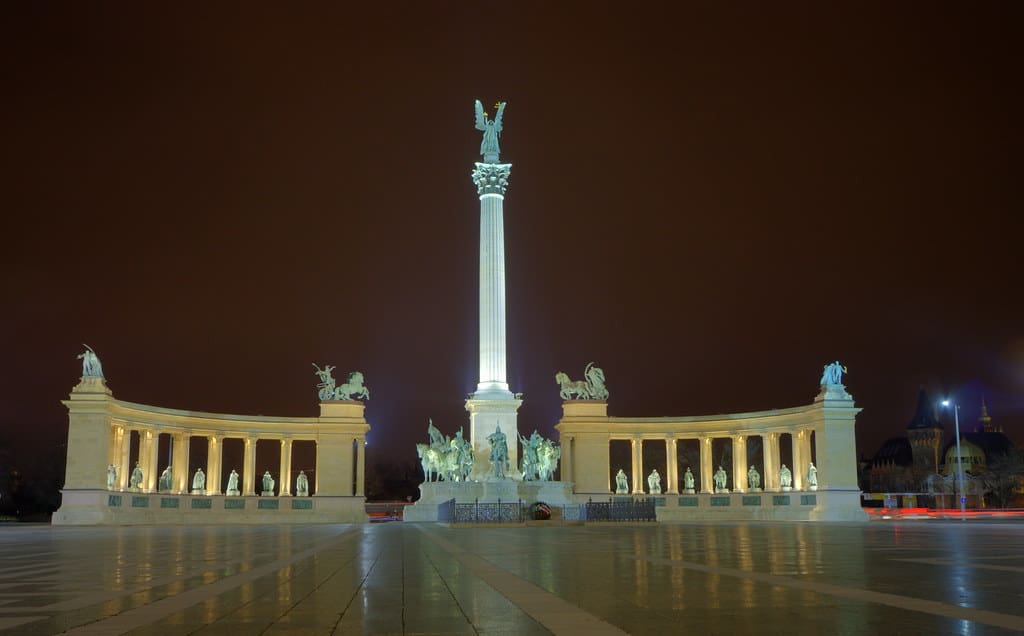
A square that represents the formation of the country.
One of the city’s most iconic squares is the famed Heroes’ Square which has statues that honor the seven Hungarian tribes that eventually formed the country.
Hero’s square is one of Budapest’s main squares and the Millennium Memorial, which was made to have seven chieftains of the Magyar tribes who founded Hungary and other key heads of state.
it is one of the city’s most iconic monuments. There is a huge column designed to show Archangel Gabriel standing between the statues.
Nearing the end of Andrássy Avenue is where you will find the plaza, and Andrássy Avenue was both given the honor of being UNESCO World Heritage Sites in 2002.
The Museum of Fine Arts could be labeled as one of the best museums in the country and the most recognizable structure in Heroes’ Square.
Although the area is most attractive at night, if you don’t have enough time, it is recommended to see it in the morning and then head to Budapest’s City Park (Városliget).
You’ll observe a lot of Hungarian families eating picnics and resting in the shady portions of this beautiful green space on a Saturday or Sunday in the spring or summer.
Come check out this historical Hungarian square now.
Address: Zugló, Budapest, Hungary
House of Terror
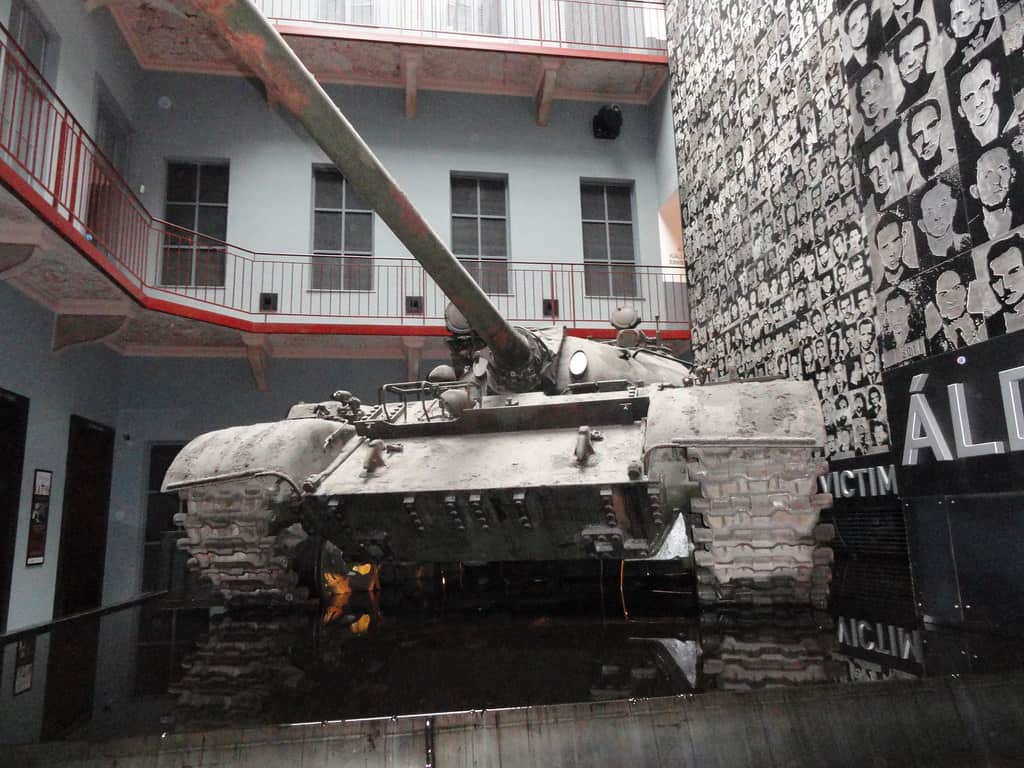
If these walls could talk, oh, the stories they’d tell.
The House of Terror Museum is housed in the former headquarters of the Fascist Arrow Cross Party on Andrássy Avenue.
It is before turning into the headquarters of the State Protection Authority (Soviet secret police), the AVH, from 1945 to 1956.
The museum was built to remember the fascist and communist movements in Hungary before and during WWII, as well as to serve as a reminder of the victims of these terrible times.
Because most Hungarians were hostile to the oppressive communist dictatorship, they were closely monitored.
Politicians and those who did not share the same communist beliefs were investigated and, in some cases, brutally tortured in this structure.
Each display is multi-sensory, with photo and video material paired with scary Soviet-style music. Walking through the museum is both exciting and chilling.
The museum’s basement is the most thrilling section, where you can see examples of holding rooms where inmates were tortured.
Reserve a guided tour now to learn more about the historical movements in Hungary.
Address: Budapest, Andrássy út 60, 1062 Hungary
Travel is the healthiest addiction. Everywhere is waiting for you. Experience different cultures around the world by checking out the list of the beautiful countries to visit around the world. When you roam around the world, you have to go to the USA. America, is a nation of nations. Click here for the best states to travel to in USA.
Hungarian National Museum
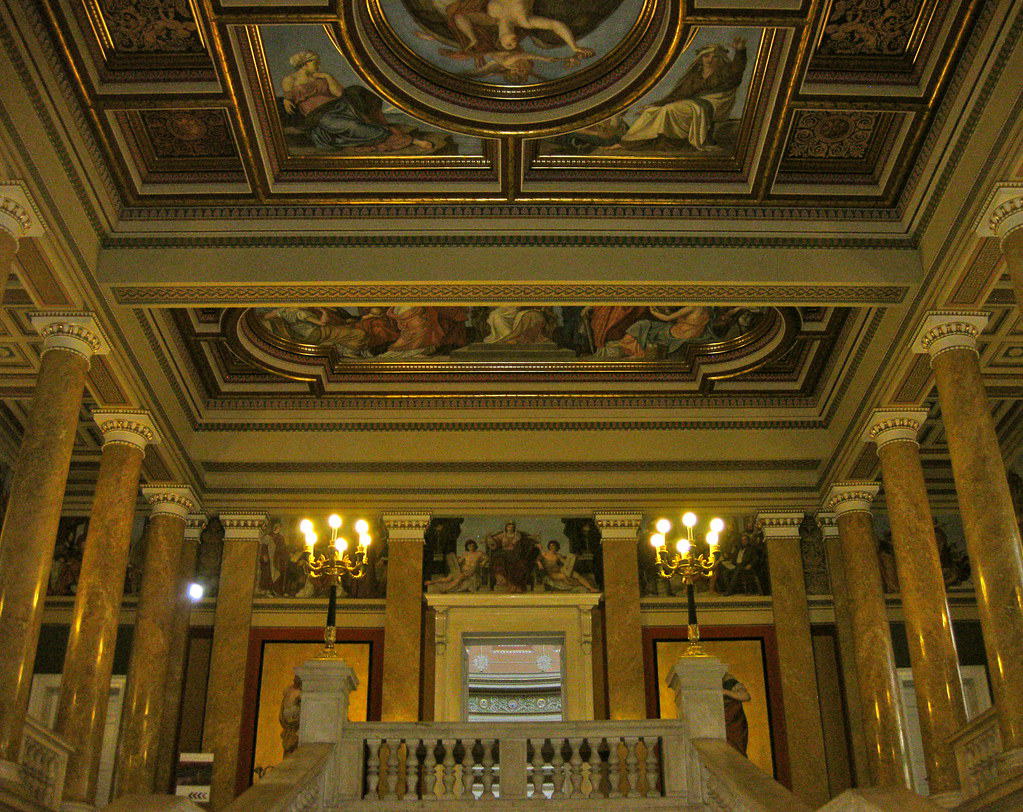
Have the experience of learning about this historic city’s rich past.
The Hungarian National Museum is where numerous exhibits detailing the country’s history, archaeology, art, and religion reside.
Including exhibitions from sites now considered to be out of the Hungarian country’s borders.
The Hungarian National Museum is surely packed with information, housed in a beautiful neoclassical structure on Budapest’s Muzeum avenue.
It is a must-see for anybody interested in learning more about Hungary and Budapest’s rich and fascinating history.
The interior, particularly the colorful and intricate stairways leading to the second floor and the central rotunda, which is modeled after the Pantheon in Rome, are unquestionably the most attractive aspects of the structure and well worth a few photos.
Even if you don’t plan on exploring the museum’s interiors, the magnificent Neoclassical museum structure is worth seeing.
The exterior features lovely gardens, which are ideal for relaxing in the sun during the summer months.
When you’re in Budapest, don’t forget to check out the national museum.
Address: 1088 Budapest, Small Blvd 14-16, Hungary, 1088
Hungarian State Opera House
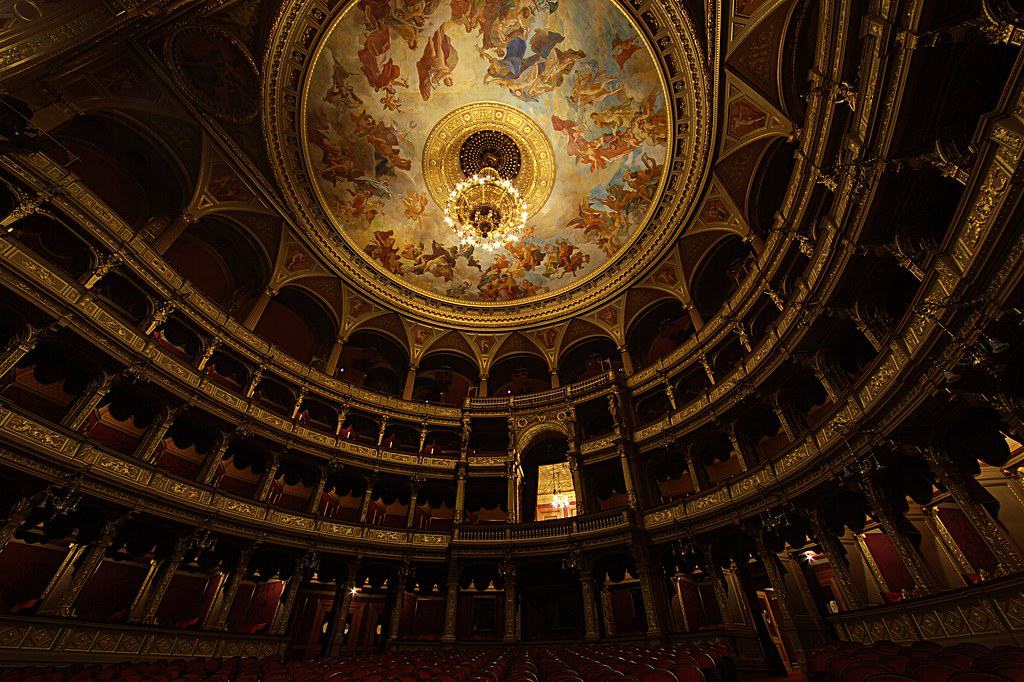
This lavishly ornamented structure is a true Hungarian architectural marvel.
The Hungarian State Opera House was built in the style of Neo-Renaissance and, additionally, some baroque features.
The auditorium is shaped like a classic U.
Sculptures and paintings by famous painters of the time are featured in the interior decor.
The opera theater is equipped with cutting-edge technology, including hydraulic stage lifting equipment for the first time.
The lavishly ornamented structure is a true Hungarian architectural marvel.
Moreover, there is an opera house that has hosted many notable musicians over its history.
Gustav Mahler, the iconic band director, Otto Klemperer, János Ferencsik, Béla Bartók, and Giacomo Puccini performed two of his operas on the theatre stage, were among them.
The wall paintings by famed painters like Károly Lotz, Bertalan Székely, and Mór Than pique the audience’s curiosity. The house’s front is adorned with statues of Hungary’s most famous composer, Franz Liszt, and Ferenc Erkel, the author of the national anthem.
Visit this structure that has met famed people throughout history now.
Address: Budapest, Andrássy út 22, 1061 Hungary
Liberty Statue
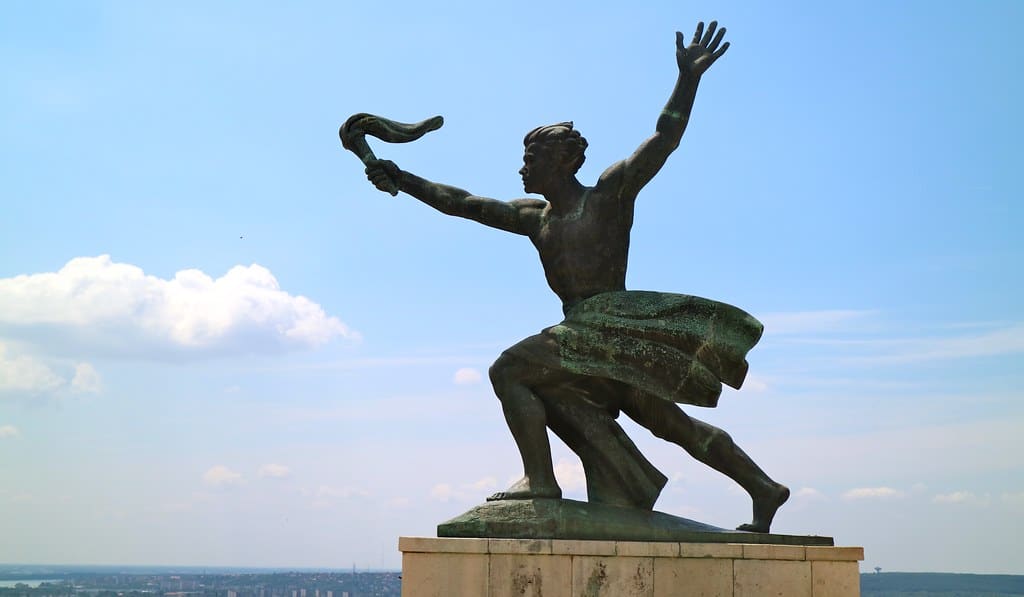
See unrivaled panoramic views of the city at this monumental location.
Because of its distinctive location above the city, the Liberty Statue on Gellert Hill is one of the few interesting Communist statues that have stayed in place after the transition to democracy.
Initially, the statue was made for honoring Soviet forces in 1947 who died liberating Hungary; however, the engraving was changed to “those who sacrificed their lives for Hungary’s independence, freedom, and prosperity.”
A palm leaf is held by the 14 m tall bronze statue, which stands on a 26 m pedestal. Zsigmond Kisfaludi Stróbl conceptualized the monument.
According to urban legend, the design was intended for István Horthy’s memorial and would have included a human child instead of the palm leaf that was a Soviet addition.
It is a gorgeous part of Budapest’s skyline due to its location on Gellért Hill. The statue can be visited at any time of day or night.
View it from above in the Citadella at the top of Gellért Hill, or walk, bus, or vehicle along the Citadella sétány to its base.
The panoramic views from beneath the statue are unrivaled, making the climb to the top of the hill worthwhile.
Add “climb to Liberty Statue” to your list of to-dos on your next trip to Budapest.
Address: Budapest, 1118, Hungary
Margaret Island
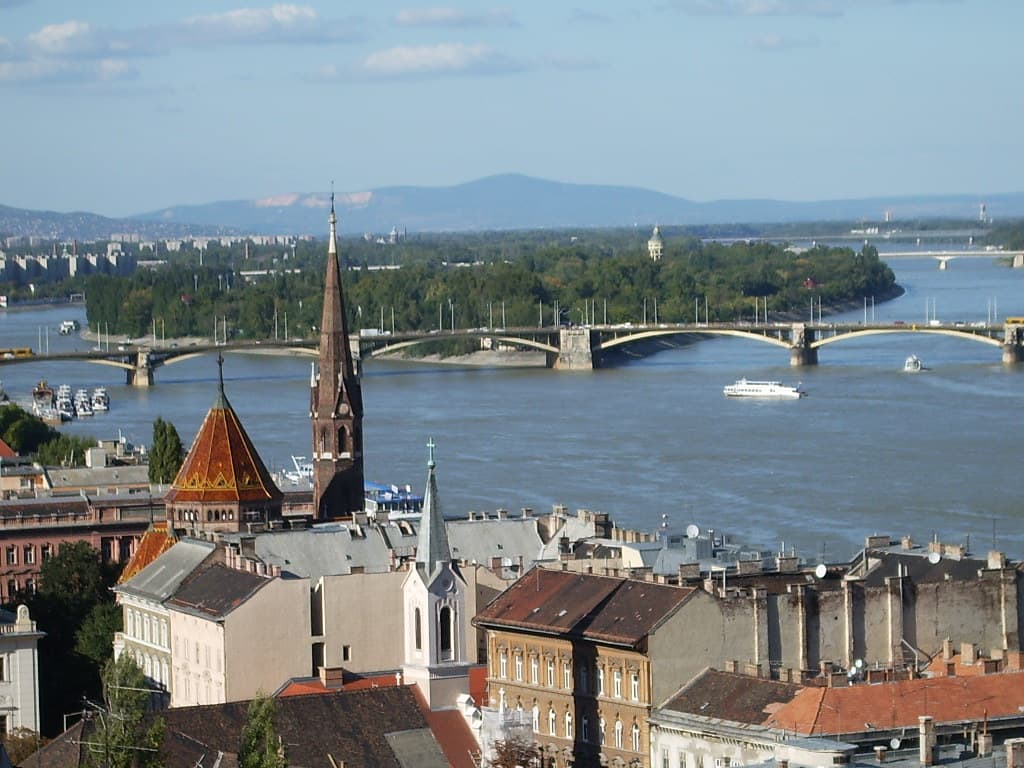
Margaret Island equals to Budapest’s Central Park, is the best getaway from the occasionally oppressive Budapest downtown, especially in the summer.
The teardrop-shaped 225-acre island is connected to the mainland by the picturesque Margaret Bridge. It is home to vast green spaces popular for picnics and gatherings in the summer.
There are a number of pubs along the Danube that serve food and booze, giving Budapest, which is landlocked, a Mediterranean vibe.
The Platinum warm baths, the 13th-century remnants of the Dominican Convent, the famous Art Nouveau water tower with panoramic views of Budapest, a Japanese Garden, and the acclaimed musical fountain are just a few of the attractions on the Island.
A coordinated fountain, light, and music extravaganza will be performed to popular songs from many genres.
It’s a fantastic free nighttime activity in Budapest.
The island is exceptionally accessible; take the 4-6 tram or walk down the slope from Parliament.
What are you waiting for? Visit Margaret Island now.
Address: Zielinski Szilárd stny, Budapest 1138 Hungary
Memento Park
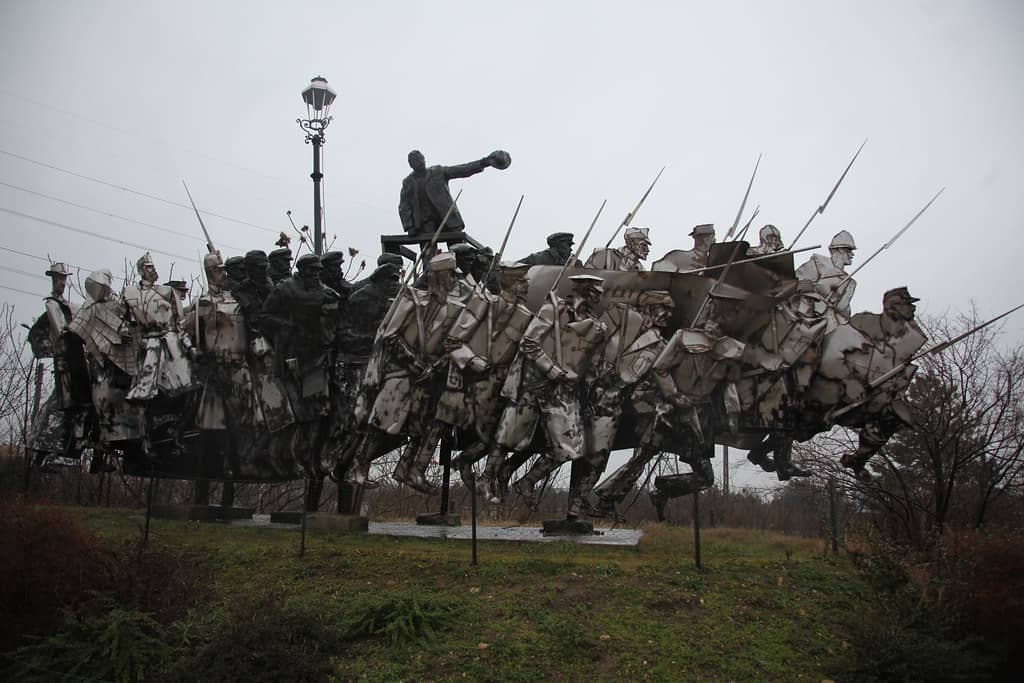
Stroll through a park of Communist mementos.
This unique sculpture park is now where some of Hungary’s many Communist monuments and statues from the Communist era reside.
The government either dismantled these statues as part of the decommunization process, or the Hungarian people physically removed them in protest against the former dictatorship.
When the park first opened in 1993, it served as a showcase for some of these monuments and a significant part of the city’s history.
Temporary displays about life under the communist dictatorship, including information about the Hungarian Secret Police, are available on-site in a tiny museum.
See several massive sculptures of Communist stalwarts such as Lenin, Marx, and Engels, and learn about Hungary under Stalin’s dictatorship, all while basking in the sun.
There’s also a theater where you can watch old propaganda films that are pretty unusual.
Come and check this place out now on your next adventure to Budapest.
Address: Budapest, Balatoni út – Szabadkai utca sarok, 1223 Hungary
Parliament Building
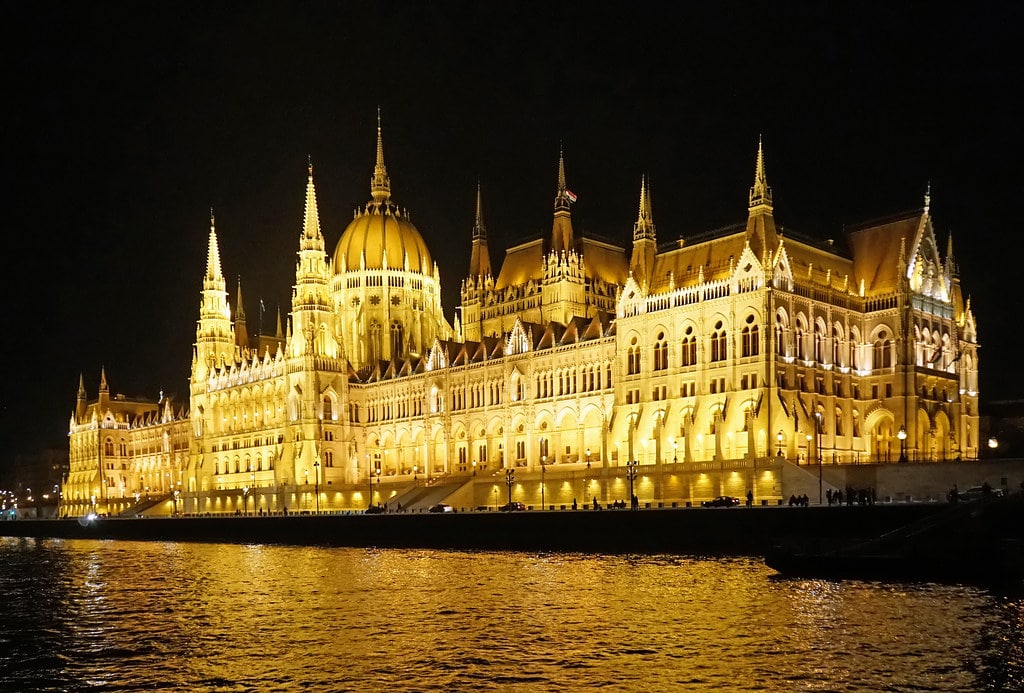
The Budapest Parliament is the famed icon of the country’s capital and one of the world’s biggest parliaments.
The Hungarian Parliament, commonly known as the Budapest Parliament, has become a significant city icon. It is also one of Europe’s most well-known structures.
After the Parliament of Romania and the National Congress of Argentina, it is the world’s third-largest assembly building.
The National Assembly of Hungary’s seat, built between 1884 and 1902, was the largest building. It is 879 feet (268 meters) long and 404 feet (123 meters) broad, with 691 rooms.
The size of the Parliament reflected Hungary’s economic might at the turn of the twentieth century.
The tour, which lasts about 50 minutes, will show visitors the Parliament’s most stunning rooms, including:
Staircase XVII: The tour of the House of Parliament begins with a trip up the red-carpeted main staircase of the building.
Visitors will arrive on the building’s most stunning floor, where they will be greeted by a high relief of Imre Steindl, the structure’s architect.
The Old Upper House Hall is currently open to tourists and is, as expected, complete with fine oak furniture and gold-plated ornamentation.
See this magnificent structure now.
Address: Budapest, Kossuth Lajos tér 1-3, 1055 Hungary
Ruin Pubs
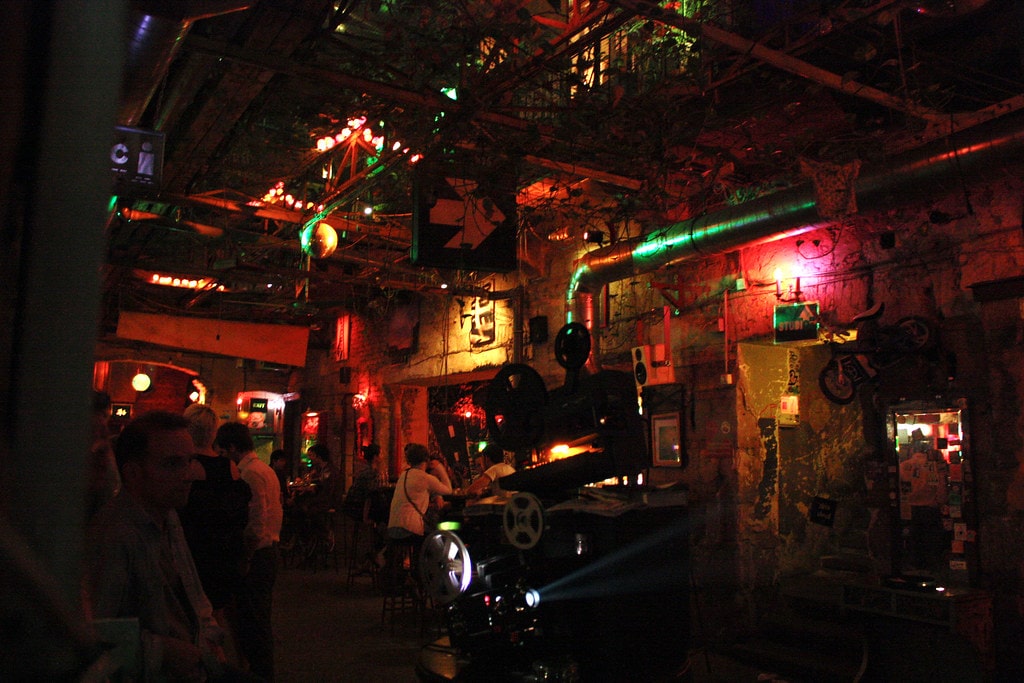
Drink the way Hungarians drink.
For nearly two decades, travelers have been drawn to Budapest by ruin bars, and a drink or ten at the legendary Szimpla Kert is one of the top things to do in Budapest.
But what precisely is a ruin bar? Many buildings in Budapest’s old Jewish Quarter were abandoned to rot after World War II and the Cold War.
In the early 2000s, a group of dynamic people began transforming these derelict buildings and courtyards into the ideal character-filled basement bars and pubs, or ‘romkocsma,’ earning them the moniker of ruin bars/pubs.
From its exterior, they look like any other abandoned building, you’ll find that on the inside, they’re anything but ordinary, with Szimpla Kert being Budapest’s first and best ruin bar.
When you go through Szimpla Kert’s doors, the first thing you’ll notice is the darkness.
Indifferent to the time of day, it’s slightly disarming, as if you’ve entered another universe.
This seems like something the Lost Boys from Peter Pan would come up with if they were to open a tavern.
Then there’s the art, the colorful neon lights, the disco balls, the 90’s televisions, and the plants hanging from the ceiling. In an old Trabant, you can even have a beer (Soviet car).
Visit these eccentric bars now when in Budapest.
Address: Budapest, Kazinczy u. 14, 1075 Hungar
Shoes On The Danube Promenade
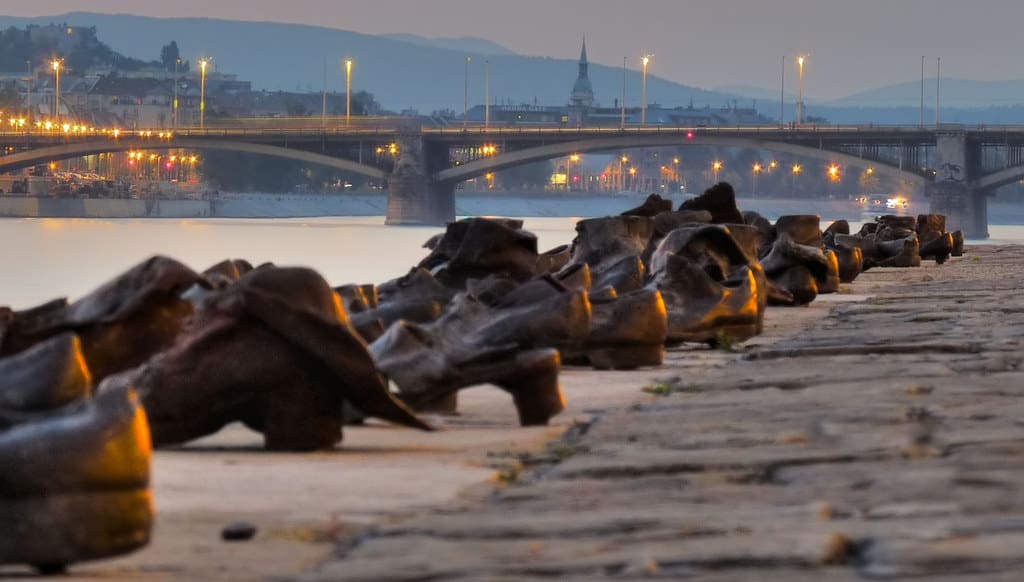
It’s a somber but persistent reminder that in battle, no one actually wins.
The Holocaust was harsh on Hungary’s Jewish community, and the Shoes on the Danube memorial honors those who died during that time.
In late 1940, Hungary joined the Axis in compensation for territory lost in the Treaty of Trianon. By late 1943, however, the country had realized the Nazis’ misdeeds and was eager to join the Allies.
Many Hungarian Jews were picked up methodically and sent into the death camps across Europe, including Auschwitz.
However, many decided to stay on the Danube River’s banks, where they were mercilessly tortured and slain before being carried away by the flowing waters.
Many victims were compelled to remove their shoes before execution (shoes were an essential commodity during the war).
The Shoes on the Danube memorial honors those who have died during this terrible historical period.
The simple memorial features 60 pairs of mid-century iron shoes, accurate in size and detail, lining the riverbanks near Parliament.
They represent that no one was spared, regardless of their status, age, or gender. Written on it was: “To the remembrance of the victims fired into the Danube by Arrow Cross militiamen in 1944-45,” to respect those who perished.
As harrowing as it may be, a visit here is a must-do while in Budapest.
Address: Budapest, Id. Antall József rkp., 1054 Hungary
St. Stephen’s Basilica
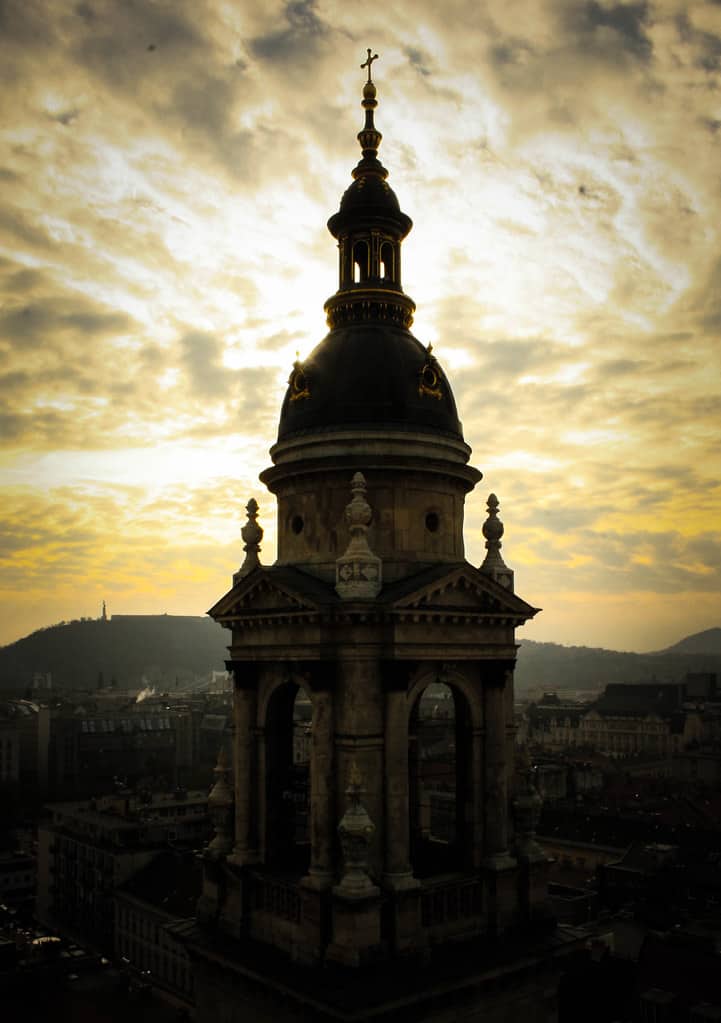
While Paris has Notre Dame. Florence has the Duomo. London has St. Paul’s Cathedral. Budapest has its signature St. Stephen’s Basilica.
A journey to the city would not be complete without a stop at this neo-classical masterpiece, regardless of your religious beliefs.
St. Stephen’s Basilica (Szent István Bazilika), Budapest’s largest church, is cherished by Hungarian Catholics because it houses the mummified right hand of King St. Stephen, the founding father of modern-day Hungary.
As a result, the church is understandably lavish, with the majestic interior, including intricate murals and gold accents, standing out.
As soon as you step inside, you’ll sense the structure’s enormous, dark, and awe-inspiring power.
Also, the interior elements glow spectacularly as the sun shines through the stained glass windows.
St. Stephen’s mummified hand could be seen to the right of the main altar; to see it, you must make a ‘donation’ for a light to illuminate the hand.
The panoramic dome, which affords nearly 360-degree views of downtown Budapest, is the best reason to visit St. Stephen’s.
Moreover, from this point of view, it offers broad views of famous Budapest sights like the Parliament, Basilica Square, Castle Hill, and downtown, and it is particularly lovely at dusk.
Interestingly, the dome of St. Stephen’s is the same height as the Hungarian Parliament building at 96 meters, symbolizing the importance of both earthly and spiritual thinking, so you would feel as if you’re on top of the world.
Don’t miss this basilica out when in Budapest.
Address: Budapest, Szent István tér 1, 1051 Hungary
Széchenyi Thermal Baths
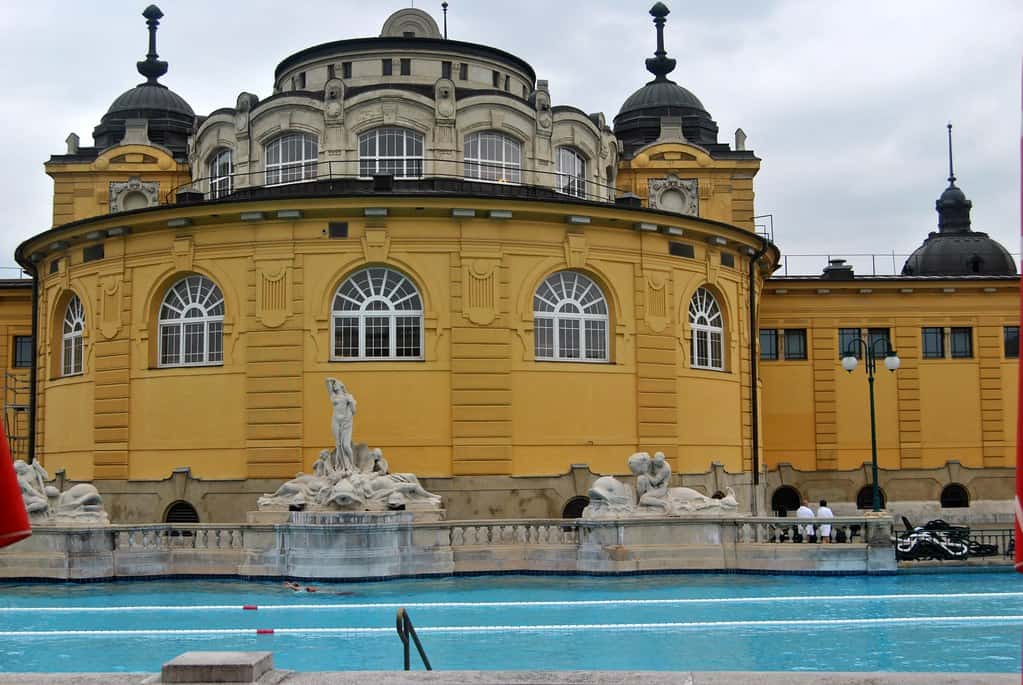
The largest “medicinal” bath center in Europe.
The Széchenyi Thermal Bath, Europe’s largest natural hot spring spa, opened in 1913 in a neo-gothic design.
Széchenyi Thermal Bath is Budapest’s and Europe’s largest natural hot spring spa, and in 1913 this neogothic bath first opened its doors.
This spa contains over 15 pools, three of which are enormous outside pools and the rest of which are smaller indoor pools.
Moreover, there are also several saunas, steam chambers, and rooms where several forms of massages are offered.
Likewise, the most stunning bath units are found outside.
Being in one of the open-air thermal baths heated to 37°C in the middle of winter when it is below freezing is one of the best experiences.
The spa’s operating hours, cleanliness, magnificent architecture, and even its surroundings are all of excellent quality.
Surprisingly, retired Hungarians are often seen playing chess in the water in the hottest outdoor thermal baths. They’ll be eager to challenge you if you know how to play.
Experience being in this natural hot spring now.
Address: Budapest, Állatkerti krt. 9-11, 1146 Hungary

